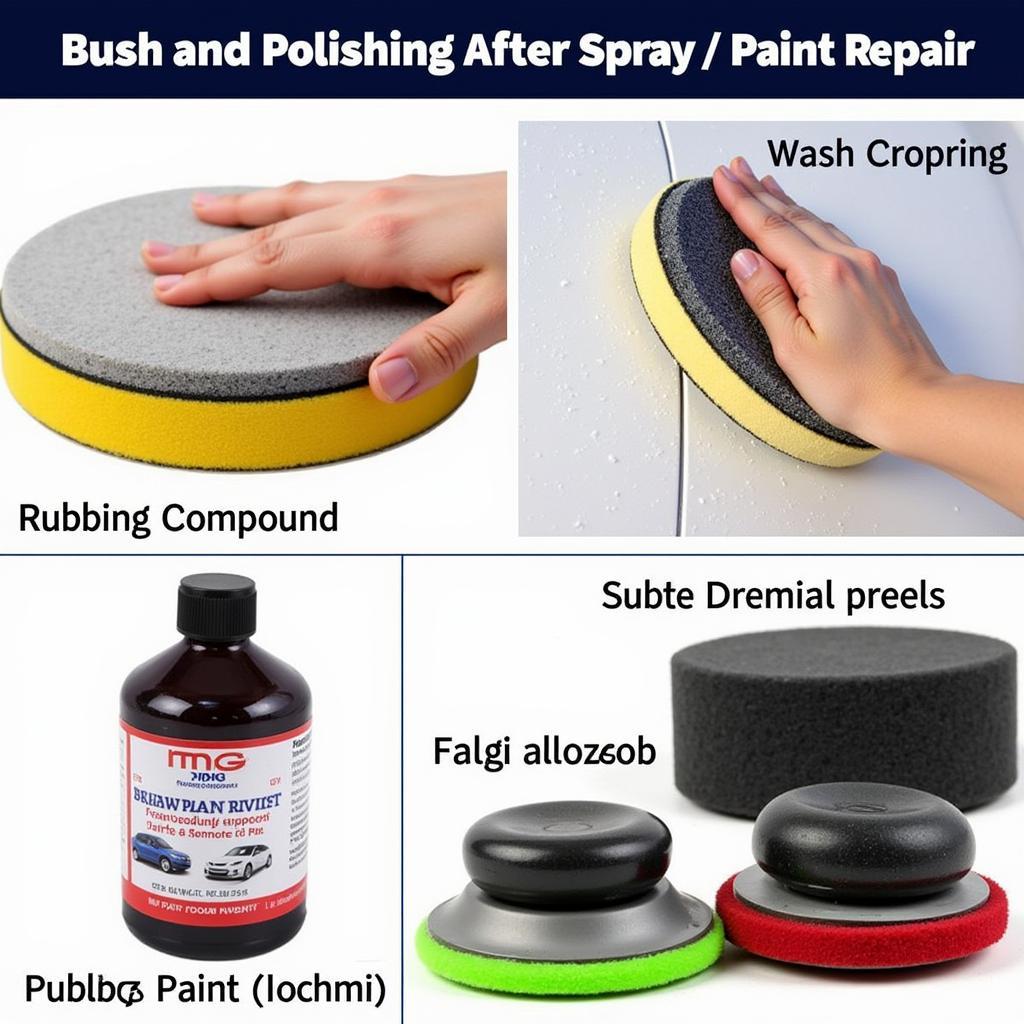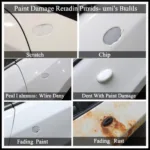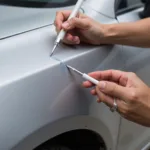Spray paint is a popular and often cost-effective solution for car paint repair, offering a way to address minor cosmetic damage and even more significant issues. Whether you’re dealing with scratches, chips, or larger areas of damaged paint, understanding the nuances of using spray paint can save you time and money while achieving professional-looking results. This guide will delve into the world of spray paint for car paint repair, covering everything from choosing the right paint to achieving a flawless finish. After the introduction, you can learn more about car scratch repair with spray paint on our dedicated page. car scratch repair spray paint.
Choosing the Right Spray Paint for Your Car
Selecting the correct spray paint is crucial for a successful car paint repair. Matching the original color is paramount. Your car’s paint code can usually be found on a sticker inside the driver’s side doorjamb, glove compartment, or under the hood. Once you have the code, you can purchase matching spray paint from automotive stores or online retailers. There are several types of automotive spray paint available, each with its own pros and cons:
- Lacquer: Dries quickly and is easy to apply, but less durable.
- Enamel: More durable and resistant to chipping and fading than lacquer.
- Acrylic Lacquer: Combines the fast drying time of lacquer with the durability of enamel.
- Urethane: Highly durable and provides a long-lasting finish, but requires specific primers and clear coats.
Consider the size and severity of the damage when choosing your paint. For small touch-ups, a spray can might suffice. Larger areas may benefit from an airbrush for a smoother, more even application. You can find more information comparing spray paint and airbrush application on our website. car repair spray paint vs airbrush
Preparing the Surface for Spray Painting
Proper surface preparation is key to achieving a professional-looking finish when using spray paint for car paint repair. Start by thoroughly cleaning the area to be painted with soap and water, then degrease it with a wax and grease remover. If there’s any rust present, remove it with a wire brush or sandpaper. Sand the damaged area and surrounding paint with progressively finer grit sandpaper to create a smooth surface for the paint to adhere to. Mask off the surrounding areas to protect them from overspray.
Applying the Spray Paint
Shake the can vigorously for at least two minutes before spraying. Hold the can about 8-12 inches away from the surface and apply thin, even coats, allowing each coat to dry before applying the next. Avoid spraying too much paint at once, as this can lead to runs and drips. Several thin coats are always better than one thick coat. For more detailed information on spray paint car repair, visit our dedicated page. spray paint repair car.
Finishing and Buffing
Once the final coat of paint is dry, you can remove the masking tape. If you’ve applied a clear coat, allow it to dry completely before buffing. Use a rubbing compound and a polishing pad to remove any imperfections and blend the repaired area with the surrounding paint. Finally, apply a coat of wax to protect the newly painted surface. Learn more about buffing out spray paint repairs on our dedicated how-to guide. how to buff out spray paint repair on car
 Finishing and Buffing Car Paint After Spray Paint Repair
Finishing and Buffing Car Paint After Spray Paint Repair
Conclusion
Spray paint offers a practical and effective solution for car paint repair, allowing you to address minor blemishes and restore your car’s appearance. By choosing the right paint, properly preparing the surface, applying the paint correctly, and finishing with a buff and polish, you can achieve professional-looking results and save money. Remember to always prioritize safety by working in a well-ventilated area and wearing appropriate protective gear when using spray paint for car paint repair.
FAQs
- Can I use any spray paint on my car? No, you should use automotive spray paint specifically formulated for car paint repair.
- How do I match the paint color? Find your car’s paint code and purchase matching paint from an automotive store or online retailer.
- Do I need a primer? A primer is recommended, especially if you are repairing bare metal.
- How many coats of paint should I apply? Apply several thin coats, allowing each coat to dry before applying the next.
- How long does it take for spray paint to dry? Drying time varies depending on the type of paint and environmental conditions.
- Can I spray paint over rust? Remove any rust before applying spray paint.
- Do I need a clear coat? A clear coat is recommended to protect the paint and enhance its gloss.
Common Scenarios and Questions
- Scenario: Small rock chips on the hood. Question: Can I just touch up the chips with spray paint?
- Scenario: Scratches on the bumper. Question: What grit sandpaper should I use for sanding before painting?
- Scenario: Faded paint on the roof. Question: Can I use spray paint to repaint the entire roof?
Further Reading and Related Articles
Check out our other helpful articles on car repair topics: Car spray paint repair near me. car spray paint repair near me
Need further assistance? Reach out to our 24/7 customer support team via WhatsApp: +1(641)206-8880, or Email: [email protected].


